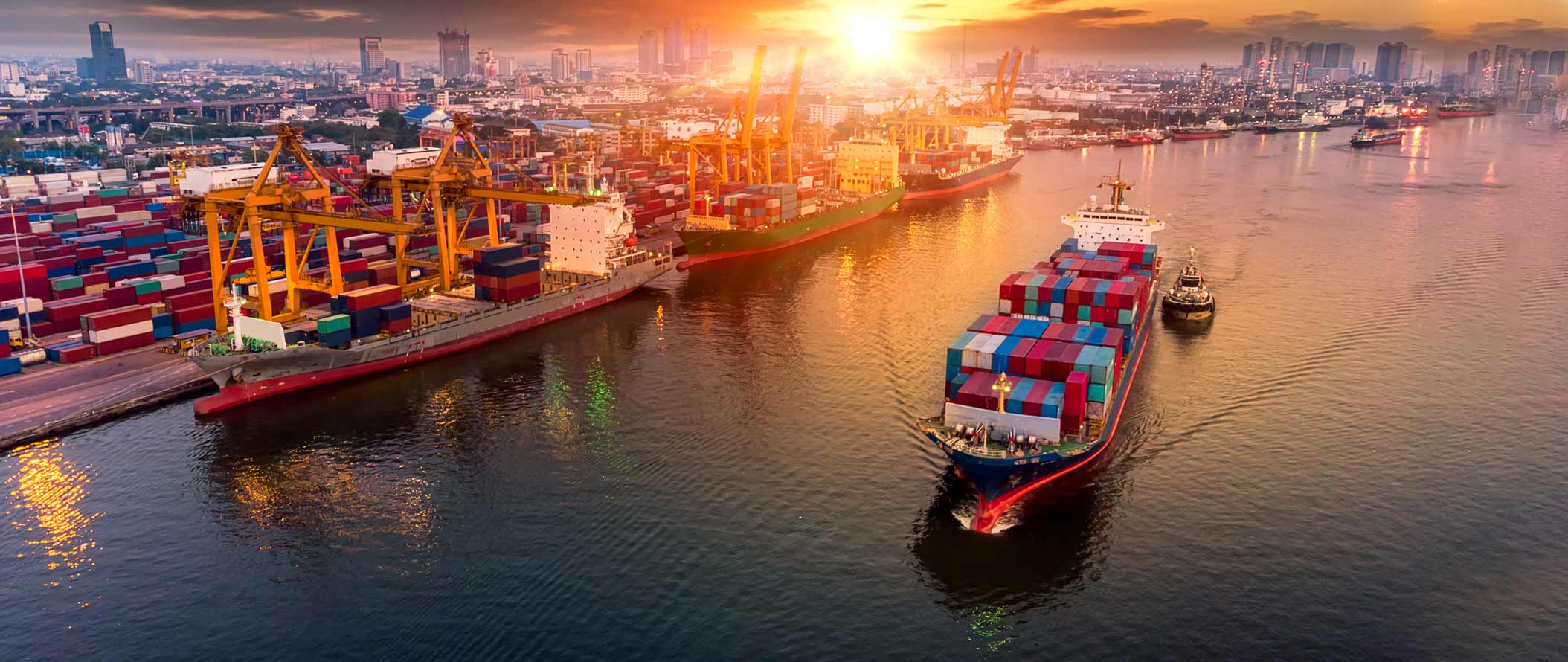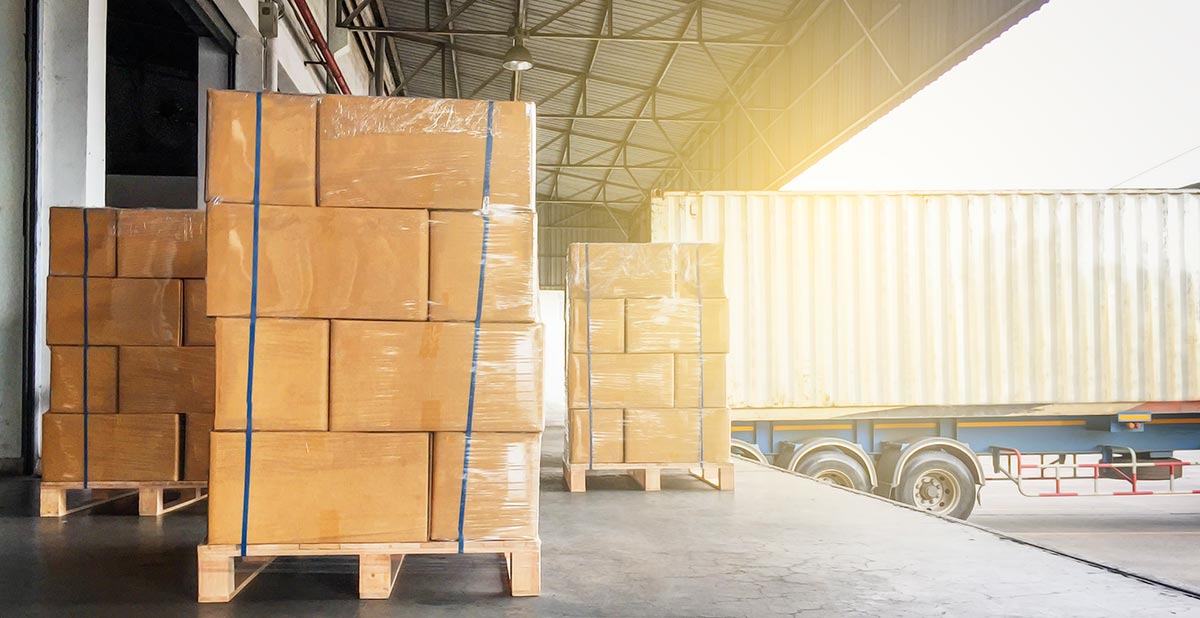
Maybe it was in March when you first noticed. Suddenly, the shelves at your local supermarket seemed bare. The essentials that you took for granted as always in stock weren't there anymore. Many businesses, especially those that rely on resources from China, felt the strain, too. Goods were stuck in customs or left sitting on pallets with no movement for days, and even weeks.
What happened?
Covid-19 disrupted the entire global supply chain, and even months later, we’re feeling the impact. McKinsey & Company found a 29% increase in grocery spending by consumers in March. During the same period, food service spending lost 27% of its revenues—a trend that continues to disrupt supply chains as the global response to Covid-19 evolves. Distribution companies are constantly juggling new demands and obstacles to ensure goods continue to flow, which is sparking further investigation into how supply chains operate. They’re finding there are opportunities for change across industries; however, making significant progress doesn't come without challenges.
The Chinese city of Wuhan is a manufacturing hub for the automotive and semiconductor industries. As the initial epicenter of Covid-19, the shutdown there—followed by much of China—put a significant part of the worldwide supply chain under immense strain. As a major player in the global value chain, China produces many components for both consumer and industrial products that are shipped to other parts of the world for assembly. Due to that outsized role, any slowdown of these components is a big problem.
In the U.S., a re-examination of regionalized supply chains was already underway by the time Covid-19 hit, primarily owing to the shock of 2019’s tariff increases on Chinese goods. In the first three quarters of that year, both imports from and exports to China declined by 13.4% and 15.5%, respectively. The first half of 2020 hasn’t been any better. Experts estimate that daily imports from China dropped by as much as 50% in January, until the country reopened in late March.
This massive upheaval renewed interest in trade deals between North American suppliers as a move toward economic resiliency and greater harmony in the supply chain. It especially has experts talking: What ways can the U.S. reduce reliance on APAC countries?
For the industries that want to adapt, a move to more regional supply chains is one approach gaining ground, but there are hurdles, namely:
Global supply chains have been dominant for decades. Primarily driven by less expensive labor costs, and consumer demand for cheaper goods, commercial supply chains are now heavily invested in offshore locations like the APAC region—and much less invested in manufacturing at home. From cell phones to electric vehicles, foreign-produced goods helped deter domestic manufacturing and distribution growth.
One area significantly impacted is the pharmaceutical industry. Estimates indicate that about 80% of the ingredients and components used in U.S.-made medicine come from China. That includes both medicines made in the United States by pharmaceutical companies as well as those imported and sold to consumers and hospitals. Now, many of the big U.S.-based pharmaceutical businesses are looking to move the supply chain closer to home, to both better serve consumers and to remove some of the risks associated with ingredients coming from a handful of different sources.
Environmental concerns are also driving changes to the supply chain. The global value chain distributes product around the world and contributing carbon emissions into the air, polluting water, and increasing reliance on fossil fuels. As companies continue to become more environmentally conscious, they may find that keeping products closer to home is beneficial to the planet, even if it's slightly more expensive.
Strong regional trade partnerships between Canada and Mexico help reduce U.S. reliance on APAC in many sectors. While China remains the biggest source of imports to the U.S., Canada and Mexico are major trade partners, with a lot of untapped potential. Building new, and expanding existing, regional supply chains can benefit all three countries. Some companies are also looking at what they can do inside the U.S. to ramp up production and storage capabilities.
The primary challenge for regional supply chains, again, is cost. High labor prices in North America was one of the reasons many companies moved offshore. Companies considering regional supply need to look at the higher labor costs that more localized production might provoke, and other ways to potentially reduce costs to keep prices acceptable to consumers.
A stable and efficient supply chain is a crucial measure of success.
“Manufacturers need to weigh the risks and rewards of building more regional supply chains—they don’t want to risk running out of critical parts, but they may not have control over products being built and managed in potential global hotspots,” says Terri Hiskey, Epicor Vice President of Product Marketing. She says that sourcing local suppliers will almost certainly be more expensive due to higher local labor costs. “The best thing manufacturers can do is to be transparent with their supply chain and their customers about the current situation. Then, if prices need to be adjusted to account for higher costs, it won’t be a surprise,” Hiskey explains.
A stable and efficient supply chain is a crucial measure of success. Both commercial customers and individual consumers depend on the supply chain to be reliable, getting components and products when and where they need them. Another challenge with regional supply is ensuring the right supplies are sourced from regional partners when possible, and mapping movement through the chain to create efficiencies. Tracking various goods over different routes through a region is potentially complicated.
“Distributors need to figure out how to reconfigure their logistics for picking up goods without interacting face-to-face with their suppliers—and then get those goods directly to their own customers with curbside delivery,” says Emma Vas, Epicor Director of Product Marketing. “Mobile technology is one way to provide a means of interaction between the manufacturer and distributor.”
Something else to consider is volume. As some companies shift from global to regional supply chains, they need to account for how much supply to move at a given time and how to account for delays. Today’s consumers want products more quickly than ever, and a recent Gartner survey revealed that 25% of survey respondents cited consumer demand as a reason they’re shifting to a regional or localized supply chain. Global distribution is mainly via cargo ship and plane, but regionally, most travel is by truck. Recalibrating flow of volume could be challenging without the costly development of national rail infrastructure.

Right now, a priority for multinational companies across industries is finding ways to reduce risks along the supply chain.
While predicting disruptive events isn't easy, companies can plan for uncertainty both across industry and location. Beyond events like Covid-19, any number of unpredictable situations can arise for both global and regionalized supply chains. Examples include trade wars, regulatory or governance disruptions, labor strikes, and even natural disasters.
To help mitigate some of these risks, many businesses are looking at ways to move away from full reliance on APAC, using both global and regional possibilities. For example, looking to India and Mexico as major trading partners to serve both global and regional needs. The key here, however, is not fully relying on any one option, so if uncertainty strikes the global chain, companies can shift to regional distribution to pick up the slack and vice versa.
U.S. companies can look closer to home and work toward ways to improve domestic manufacturing and distribution possibilities. Some industries, including medical, technology, and pharmaceutical, are increasingly looking at ways to stay local and are building more warehouses, especially core storage facilities. Doing so can help build more stockpiles of needed goods within the U.S., ready for transport if required. It also reduces the risk of goods getting stuck in supply chain routes during global disruptions.
Technology has its own role to play in improving supply chain management, especially as companies weigh their options.
One critical area is managing data and the flow of information. Among modern cloud-based solutions are advanced, real-time tracking tools that provide reliable data throughout the supply chain. If routes become more complex and dual supply chains more common, technology can manage multiple streams of information at once. Technology can also help prepare companies for the unexpected, helping them to become more resilient in the long run. For instance, running “scenario planning” can identify bottlenecks in the supply chain and highlight areas to improve efficiencies before making any costly decisions.
One of the companies avidly applying the rigor of data analytics is Epicor customer Stellar Industries, manufacturer of hydraulic truck-mounted equipment in Iowa. “We need a single source of truth so everything can funnel through, which should ultimately be every bit of data that we have,” says company CEO, John Wiborg. “I wouldn’t want to be in this environment stumbling around in six different places trying to get basic reports on a status of our operations.”
Consumer behavior changed during months of lockdown and the supply chain needs to continue to adapt with it.
Other ways of innovating include bringing creativity to processes like sales and serving customers. For Epicor customer CJ Spray in Minneapolis, that’s become a big area of focus—and they aren’t alone. Without a way to talk in person to customers, opening an ecommerce business channel is now a critical initiative for distributors of all sizes. This maker of specialized paint sprayers and spray foam equipment also implemented ERP cloud technology to have all transactions in one cloud-based system to support their ecommerce investment. John Marzitelli, CFO, says it helps reduce risk, “…we don’t have to worry with what will happen to our ecommerce channel if a server goes down.”
Artificial intelligence (AI) is another area of innovation and particular interest these days, especially for packaging and warehousing. When warehouses struggle to keep up with demand while keeping employees safe, many AI solutions are emerging. “One area where AI is helping is finding patterns and suggesting actions,” Vas says. “That includes faster replenishment of nearly out of stock items, shorter walking routes, and better inventory positioning.”
Automated robots and internet of things (IoT) solutions do more than track pallets and move them around. Research from Deloitte found potential benefits of autonomous robots include increased efficiency, reduced error and re-work rates, and improved safety. These solutions can learn mundane tasks, including how to pick, pack, and fulfill orders and work around the clock. Innovating with technology improves the speed of processing and allows people to work and collaborate on higher level tasks.
No one wants to see empty store shelves, panic buy, or go on a weeks-long search for toilet paper. Consumer behavior changed during months of lockdown and the supply chain needs to continue to adapt with it.
While businesses are navigating the “new now,” distribution companies are looking at the changes and challenges presented by a global pandemic to innovate, shift, and find the best way forward.
Companies that build more resiliency into their supply chain can reduce risk, improve cash flow, and give consumers more confidence that goods will be available during potential disruptions.